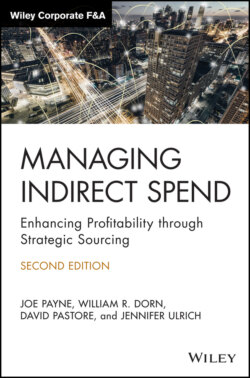Читать книгу Managing Indirect Spend - Joseph Payne, Joe Payne - Страница 71
COLLECTING MARKET INTELLIGENCE THROUGH THE RFI PROCESS
ОглавлениеThere are many tools you can use to help gather market intelligence and uncover cost savings opportunities, such as trade publications, online directories, and e‐sourcing tools. In Chapter 11, we discuss these tools and distinguish between standard and real‐time market intelligence. In this section, we discuss the predominant method companies use to collect information about the supply base once suppliers have been identified: the request for information, or RFI. An RFI is one of three forms of the RFx (request for “x”; either information, a quote, or a proposal) process. The other two forms, the request for a quote (RFQ) and the request for a proposal (RFP) serve different functions later in the Strategic Sourcing process and are discussed in detail in Chapter 4.
RFIs are typically used by companies as fact‐finding tools to learn more about the supply base and help narrow down the long list of suppliers to a shorter list. Those who make the shorter list are, then, typically invited to respond to an RFP or RFQ. RFIs can be administered in many ways, from a simple list of questions in an e‐mail to a formal document or online questionnaire with specific instructions and formats for responses. Sometimes the process is conducted through a call or by meeting with each participating supplier. Typically, the questions in an RFI revolve around company financials, quality controls, account management, customer service, experience, capabilities, locations, and other general information.
Developing and submitting an RFI to suppliers may be your first exposure to the supply base. This introduction is critical because it sets the tone for your future relationship with them and begins the process of transitioning the initiative out of the Research phase. As such, you should consider some basic concepts when developing the RFI to help you build a motivated supply base.
